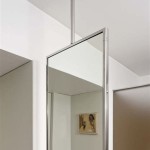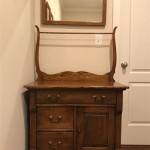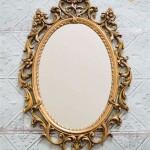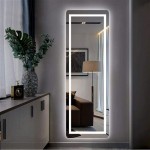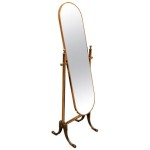What Is The Pull-Down Mirror In A Car Called?
The pull-down mirror in a car, often referred to by its more formal name, the "day/night mirror," serves the crucial purpose of reducing glare from headlights of trailing vehicles during nighttime driving. This feature enhances driver safety and visibility, minimizing distractions and eye strain caused by bright lights reflecting off the standard rearview mirror.
The day/night mirror's functionality stems from a simple yet effective mechanism involving a prism within the mirror housing. This prism can be adjusted by flipping a small tab or lever located on the bottom edge of the mirror. This action changes the angle at which light reflects off the mirror surface. In the "day" position, the mirror functions like a standard rearview mirror, providing a clear view of the traffic behind.
When switched to the "night" position, the prism redirects the bright light from trailing vehicles downwards, diminishing the intensity of the glare. This adjustment doesn't entirely eliminate the view of the rear traffic but significantly dims the reflected headlights, making it easier for the driver to focus on the road ahead. While the rear view may appear slightly dimmer in the night setting, it remains sufficient for maintaining awareness of surrounding traffic.
Before the advent of the day/night mirror, drivers often resorted to attaching small auxiliary mirrors to their existing rearview mirrors. These add-ons, while helpful to an extent, weren't integrated into the vehicle's design and could obstruct the driver's forward view. The development of the built-in day/night mirror addressed this issue, providing a more streamlined and effective solution to headlight glare.
The technology behind the day/night mirror has evolved over time. Early versions utilized a simple tilting mechanism for the mirror itself. Modern vehicles often feature electrochromic mirrors, also known as auto-dimming mirrors. These mirrors automatically adjust their reflectivity based on the ambient light levels, eliminating the need for manual switching between day and night modes. Sensors detect the intensity of light from trailing vehicles and adjust the mirror's tint accordingly. This seamless transition ensures optimal visibility without any driver intervention.
Electrochromic mirrors utilize a special gel sandwiched between two pieces of glass. This gel changes its opacity when an electric current is passed through it. The sensors in the mirror control the current, thereby modulating the tint of the mirror and reducing glare automatically. This advanced technology offers a more refined and convenient solution compared to the traditional manual day/night mirror.
While the terms "day/night mirror," "anti-glare mirror," and "prism mirror" are often used interchangeably, the most accurate and technically correct term is "day/night mirror." This nomenclature accurately reflects the mirror's primary function: providing optimal visibility in both daytime and nighttime driving conditions.
The design and placement of the day/night mirror are carefully considered to maximize its effectiveness. It's typically mounted on the windshield within the driver's direct line of sight, ensuring a clear and unobstructed view of the rear traffic. The size and shape of the mirror are also standardized to provide a sufficient field of vision without impeding the driver's forward view.
Proper adjustment of the day/night mirror is essential for safe driving. In the daytime setting, the mirror should reflect the entire rear window and provide a clear view of the traffic behind. During nighttime driving, engaging the night setting or allowing the auto-dimming feature to adjust accordingly minimizes glare and enhances visibility.
Maintaining the cleanliness of the day/night mirror is important for optimal performance. Regularly cleaning the mirror surface with a suitable glass cleaner removes smudges and dust that can obstruct the view. Avoid using abrasive cleaners or materials that could scratch the mirror surface.
The day/night mirror is a crucial safety feature in modern vehicles. Understanding its functionality and proper usage contributes to a safer and more comfortable driving experience, particularly during nighttime driving when glare from headlights can be a significant hazard.
In summary, whether manually adjusted or equipped with auto-dimming technology, the day/night mirror significantly enhances driving safety by mitigating the distracting and potentially dangerous effects of headlight glare. Its continued evolution and integration into vehicle design underscores its importance as a fundamental safety component.
What Are All The Mirrors In A Car Called Quora

Car Interior Parts Names The Ultimate Glossary
What Are All The Mirrors In A Car Called Quora
What Are All The Mirrors In A Car Called Quora

Why Is There A Mirror Near The Driver S Seat In Car Quora
What Are Those Strange Round Bubble Things On The Front Left Mirrors Of Police Cars Quora

What Is The Rear View Mirror Tab For In Garage With Carparts Com

Why Is There A Mirror Near The Driver S Seat In Car Quora

Car Mirrors Are A Very Important Part Of And With The Right Knowledge You Can Have Fulfilling Life 株式会社ネクスビジョン 自動車ミラー ガラス製ミラー製造 埼玉県川越市芳野台2 8 15

What Does The Switch On Bottom Of Rearview Mirror Do Yourmechanic Advice


